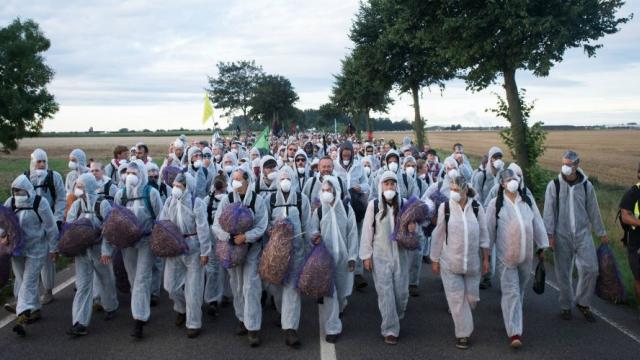
When they say a picture is worth a thousand words, writers rebel (or they write 1,500 words). I mean, pictures are great, but they can’t get across complicated concepts. Except when they can.
Which would be the summer of 2015, on two separate occasions. Early in the summer, on the West Coast of the United States, “kayaktivists” in Seattle Harbor surrounded Shell Oil’s giant Polar Pioneer drilling rig, trying to keep it from getting out of the harbor. They didn’t succeed in that, of course—the Coast Guard cleared them out of the way—but they did succeed in reminding everyone of the scale of the destruction Shell has planned. The sight of those small, many kayaks against that one brute drilling platform brought home the existential nature of the struggle: it’s all of us little guys, against the immense, concentrated wealth and power of the biggest companies on earth.
... but sadly, the forces behind those tanks are still in control. His courage faced them down for a moment, but their implacable might won the day.
In the energy world, though, I’m willing to bet that these images are poison to the fossil fuel industry. It’s not just because of their sheer inhuman oversized ugliness, but because they manage to look somehow so antique. Or rather, so modern in a postmodern world. We’re moving quickly to a planet where the small and distributed makes more sense than the centralized and gigantic—that’s why you’re likely getting your news from the net, not a TV channel. Even without understanding the science of climate change—the horror that the carbon from that digger and that drill rig is driving—you have a visceral sense that they’re in the wrong moment, the wrong mood.
The fight against Arctic oil and German coal will be long and hard. But we already know, once we’ve won, what the pictures in the textbooks will be.
3 WAYS TO SHOW YOUR SUPPORT
- Log in to post comments











